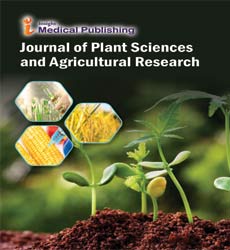Intercellular Communication in Plant Development and Defense
Nicholas Talbot*
Department of Botany, The University of British Columbia, Vancouver, Canada
- *Corresponding Author:
- Nicholas Talbot
Department of Botany, The University of British Columbia, Vancouver,
Canada,
E-mail: Talbot_n@ubc.ca
Received date: May 13, 2024, Manuscript No. IPJPSAR-24-19077; Editor assigned date: May 15, 2024, PreQC No. IPJPSAR-24-19077 (PQ); Reviewed date: May 29, 2024, QC No. IPJPSAR-24-19077; Revised date: June 06, 2024, Manuscript No. IPJPSAR-24-19077 (R); Published date: June 12, 2024, DOI: 10.36648/ipjpsar.8.2.139
Citation: Talbot N (2024) Intercellular Communication in Plant Development and Defense. J Plant Sci Agri Res Vol.8 No.2: 139.
Description
Plant cell biology is a field that delves into the intricacies of plant structure, function and interaction with the environment. From the microscopic level of organelles to the macroscopic level of tissues and organs, plant cells exhibit remarkable complexity and specialization. Understanding plant cell biology is essential for advancing agriculture, biotechnology and environmental conservation efforts. At the core of plant cell biology lies the plant cell itself, which shares many similarities with animal cells but also possesses unique features. Plant cells are eukaryotic, meaning they have a true nucleus enclosed within a membrane, along with other membrane-bound organelles such as chloroplasts, mitochondria, endoplasmic reticulum, Golgi apparatus and vacuoles.
One distinguishing feature of plant cells is the presence of a rigid cell wall surrounding the plasma membrane. Composed primarily of cellulose, hemicellulose and pectin, the cell wall provides structural support and protection, allowing plants to maintain their shape and withstand environmental pressures. The cell wall also plays a vital role in cell-cell communication, cell expansion and defense against pathogens. Within the cytoplasm of plant cells, organelles carry out various functions essential for cellular metabolism and growth. Chloroplasts, the site of photosynthesis, contain chlorophyll and other pigments that capture light energy and convert it into chemical energy in the form of glucose. Mitochondria, on the other hand, are responsible for cellular respiration, producing Adenosine Triphosphate (ATP) through the oxidation of glucose, which fuels cellular processes. The endoplasmic reticulum is a network of membrane-bound tubules and sacs involved in protein synthesis, lipid metabolism and the transport of molecules within the cell. Rough ER, studded with ribosomes, synthesizes proteins destined for secretion or insertion into membranes, while smooth ER is involved in lipid synthesis and detoxification processes. The Golgi apparatus acts as a sorting and processing center for proteins synthesized in the ER. It modifies these proteins proteins through glycosylation and other post-translational modifications before packaging them into vesicles for transport to their final destination, such as the cell membrane, vacuole, or extracellular space.
Vacuoles are large membrane-bound organelles found in plant cells, filled with a watery solution called cell sap. They serve various functions, including storage of nutrients, ions and waste products, regulation of cell turgor pressure and degradation of macromolecules through enzymatic activity. Plant cells also contain specialized structures such as plastids, which include chloroplasts as well as non-green organelles like chromoplasts (responsible for pigment synthesis) and amyloplasts (involved in starch storage). Additionally, plant cells may feature unique organelles like the central vacuole, which occupies much of the cell's volume in mature plant tissues and plays a crucial role in maintaining cell structure and storing water and nutrients.
Plant cell biology
Cellular communication and signaling are essential for coordinating growth, development and responses to environmental stimuli in plants. Plant cells utilize various signaling molecules, including hormones like auxins, gibberellins, cytokinins, abscisic acid and ethylene, to regulate processes such as seed germination, root growth, flowering and stress responses. The study of plant cell biology encompasses a wide range of techniques and approaches, including microscopy, molecular biology, genetics, biochemistry and computational modeling. Researchers in this field investigate fundamental questions about cell structure and function, as well as applied topics like crop improvement, bioremediation and sustainable agriculture. In conclusion, plant cell biology is a dynamic and interdisciplinary field that explores the structure, function and behavior of plant cells. By unraveling the complexities of plant cellular processes, researchers aim to enhance our understanding of plant growth and development, improve crop productivity and address global challenges such as food security and climate change.
Open Access Journals
- Aquaculture & Veterinary Science
- Chemistry & Chemical Sciences
- Clinical Sciences
- Engineering
- General Science
- Genetics & Molecular Biology
- Health Care & Nursing
- Immunology & Microbiology
- Materials Science
- Mathematics & Physics
- Medical Sciences
- Neurology & Psychiatry
- Oncology & Cancer Science
- Pharmaceutical Sciences
